

McCollum was a first round pick of the Red Wings in 2008 and spent six years in the organization before being dealt to the Flames. A year ago he found himself in the AHL and ECHL, posting a 2.10 GAA and .926 SV% in 17 starts with the Charlotte Checkers (AHL). McCollum will likely share a crease with Jared Coreau after Eddie Pasquale walked in free agency.
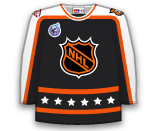
Verhaeghe, 21, was a third round pick (No.82 overall) in 2013 but has split his last two seasons between the AHL and ECHL. Last season he had 29 points (16G / 13A) in 45 games with Bridgeport (AHL) and an impressive 32 points (12G / 20A) in just 16 games with Missouri (ECHL). Verhaeghe will likely report to the Syracuse Crunch (AHL) to start 2017-18.

Gudlevskis went 15-10-4 with a 2.65 GAA and .897 SV% in 37 games as the Syracuse Crunch (AHL) starter in 2016-17. Gudlevskis has had some strong performances while representing Latvia internationally, but has not posted a SV% above .907 in single AHL season. Gudlevskis will likely report to Bridgeport (AHL) to start 2017-18.
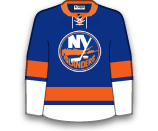
Wilson was the No.7 overall pick in 2008, but never really lived up to expectations, posting a career-high of just 20 goals and 42 points (2014-15). Wilson was slipping down the Predators depth chart, but should play an increased role in Colorado, where mid-30’s points should be his floor.
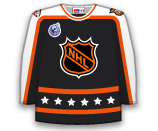
Foligno is a big-body (6’2” / 215 lbs.) that has improved offensively in each of his six NHL seasons, setting a new career-high in goals (13) and tying a career-best in points (23) a season ago. Foligno will likely take Pominville’s spot as a third line winger in Minnesota, but doesn’t offer nearly any fantasy value due to his limited power play exposure.

Ennis scored 20-plus goals and 40-plus points in back-to-back seasons, but registered just eight goals and 16 assists (24 points) in 74 games in two injury plagued seasons over the last couple of years. The diminutive winger has the talent to be a point producer, but needs to find a way to stay on the ice.

The former Sabres’ captain had two 30-goal seasons and six straight seasons of 50-plus points when he was in Buffalo. A once consistent 30-30 threat, has failed to top 20 goals in each of the last three seasons, but heads back to Buffalo, where he will look to rediscover his goal-scoring touch in the Sabres’ top-9.
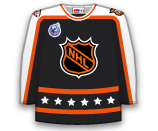
Scandella, 27, is a big physical defenseman but does not possess a lot of offensive ability outside of a big slap shot. Scandella has a career-high of just 23 points (11G / 12A) and is coming off of a year in which he had just four goals and nine assists (13 points) in 71 games. The Sabres have made a clear effort to improve their blue line, by adding Scandella and Nathan Beaulieu this offseason.

Kanzig, 22, was a third round pick in 2013 (No.67 overall) but has struggled since turning pro in 2015-16. The 6-foot-6, 245 lbs. defenseman has appeared in just nine AHL games so far and spent the majority of last season in the ECHL, where he had just five points (1G / 4A) in 40 contests.
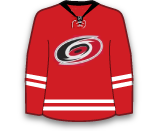
Murphy can be classified as a bust after being selected No.12 overall in 2011, but the majority of it can be chalked up to injury issues. In his first five seasons, he has amassed just 37 points (6G / 31A) in 151 career NHL games and likely won’t get a major opportunity to play thanks to a top notch Flames’ blueline.
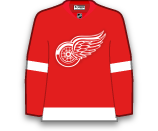
Lack was a key member of the Canucks in 2014 and 2015, but struggled in two years with Carolina. With the Hurricanes acquiring Scott Darling from the Blackhawks, they needed to move Lack or Cam Ward and the Flames came calling for a backup. Lack has posted a career 2.56 GAA and .911 SV% in 136 NHL games and will be the primary backup to Mike Smith in 2017-18.
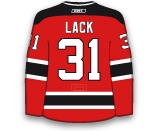
Methot is a solid depth defeseman, but has limited offensive upside. In 2016-17, the 32-year-old had 12 assists in 68 games and has not topped 20 points in the last three seasons. Methot joins a Stars’ blueline that is crowded with young defensemen.
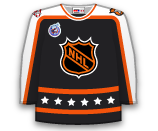
Hamonic’s name has been swirling on trade fronts for over a year, but the Islanders finally pulled the trigger on the draft floor on Saturday. Hamonic dealt with some injuries in 2016-17, but posted 14 points (3G / 11A) in the 49 games he was able to dress for. Hamonic has good size (6-foot-2/205lbs) and is a solid two-way defenseman who is both physical in his own end while possessing a big point shot at the other. The Flames are following the Predators’ model by stacking their blueline as Hamonic joins Mark Giordano, Dougie Hamilton and TJ Brodie as the Flames’ big-4.



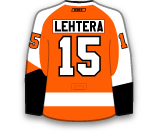



NHL trades are decided between two or more team general managers. The front office’s job is building a winning team. Building a winning team means discussing trades with other general managers across the league.
During the NHL regular season, players can be traded up until the trade deadline. The deadline is the official cutoff point for when teams can no longer make moves between each other. Players can also be traded throughout the offseason.
Teams trade players in hockey for a variety of reasons, but generally, it is done to find success, whether that is in the short term or long term. Teams may trade their top players in search of draft picks if they are undergoing a rebuild, whereas contending teams may look to acquire talent to boost their playoff chances.
Trades are a common occurrence throughout the NHL and happen often. Some years feature less trades than others, it all depends on each teams needs and the availability of attractive talent.